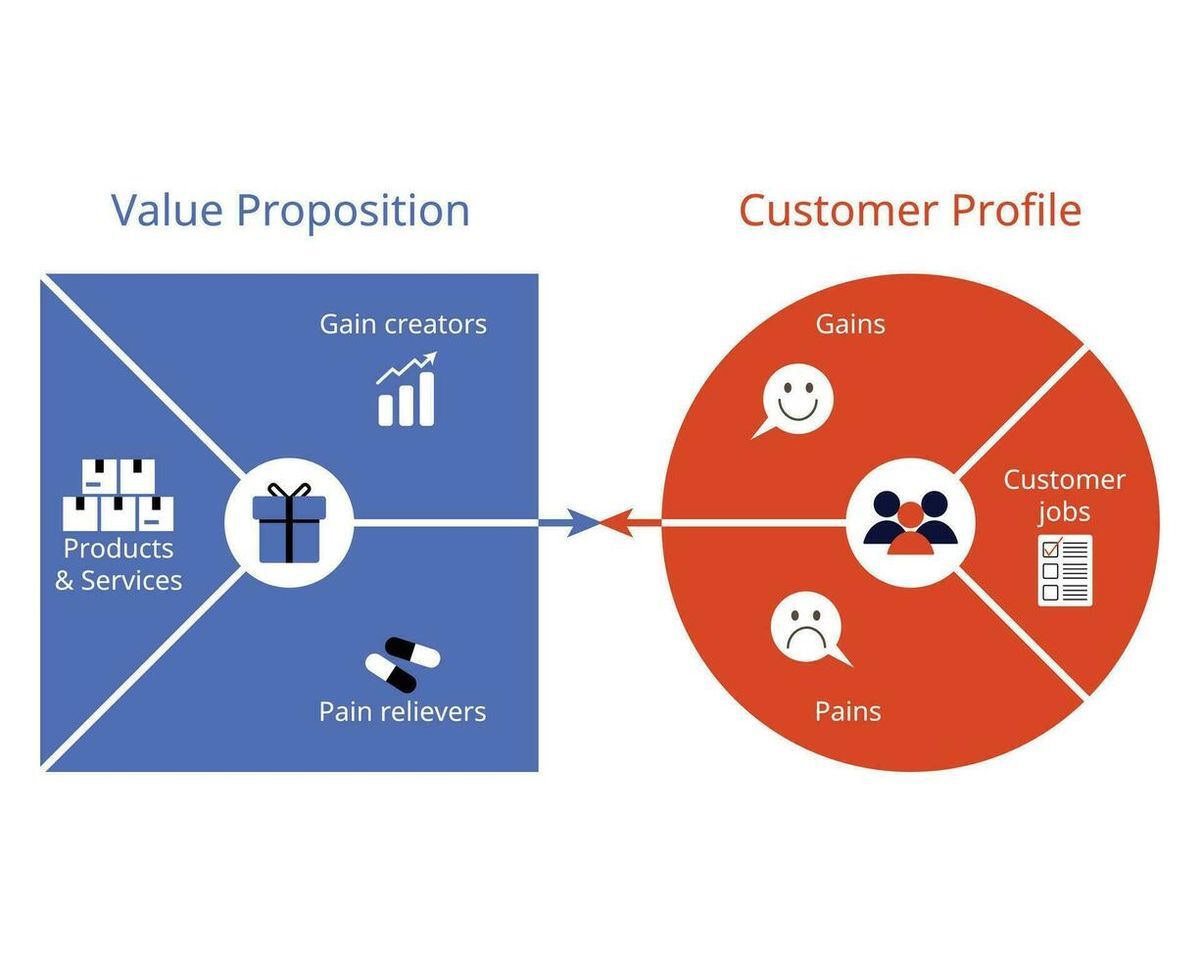The global attention span is narrowing because of the sheer amount of information we have to process every day.
This means that people like you and me – who work in the B2B industry – usually have about three seconds to catch the attention of a prospect.
Yes, you heard right. You have three seconds to make a good first impression with potential customers so that you can then get them to try out your product or solution.
The good news is that your competitors also operate within this three-second restriction.
Now, you may wonder if it is even possible to catch the attention of a prospect in such a limited time frame.
It isn’t impossible. Some excellent professionals do it easily. And no, they aren’t equipped with some mystical powers to influence their audience.
They are as ordinary or as special as any one of us.
Their secret weapon – a great value proposition – is what we're going to talk about in the rest of this blog.
What is a value proposition?
For many businesses, "What is a value proposition?" can be a million dollar question because it has the potential to propel your business into the million dollar league.
Here’s how I define a value proposition:

A value proposition is a clear statement about the outcomes that an individual or an organization can realize from using your product, service, or solution.
The keyword here is outcomes. Because that’s what your customers are interested in.
Why Your Value Proposition Matters More Than You Think
In the B2B world, you don’t get unlimited chances to explain what you do. You often have three seconds — a headline, a LinkedIn snippet, a quick pitch on a call — to communicate why someone should care.
That’s where a strong value proposition comes in.
It’s not a tagline. It’s not a mission statement.
It’s the clear, compelling promise you make to your buyers about the unique value your product or service delivers.
When done right, your value proposition is:
Memorable — buyers can repeat it to other people without fumbling.
Differentiated — you stand out from your competition.
Action-driving — it motivates people to take the next step.
In this guide, we’ll break down exactly how to create a value proposition that resonates and converts in the B2B space — step-by-step, with examples and practical tips.
1. Understand What a B2B Value Proposition Actually Is
A value proposition is a concise statement that communicates:
- Who you serve (your target audience)
- What problem do you solve
- The unique way you solve it
- The benefit or result your buyer gets
In B2B, your audience isn’t just one person — it’s oftena buying committee made up of decision-makers, influencers, and end-users. That means your value proposition needs to work across different roles and priorities.
2. Start With Your Target Buyer- Be Specific
You can’t write a strong value proposition without knowing exactly who you’re speaking to.
Generic messaging leads to generic results.
Steps to define your buyer:
Segment by industry & role: Are you targeting CMOs at B2B tech firms? Procurement managers in manufacturing?
Identify pain points: What’s slowing them down, costing them money, or making them stressed?
Understand their language: Use the same terms they use in meetings and emails, not internal jargon.
Example buyer persona snippet:
Role: Head of Marketing Operations
Pain Point: Struggles to prove ROI because campaign data is scattered across multiple tools.
Goal: Wants one source of truth for marketing performance to improve budget allocation.
3. Identify the Core Problem You Solve
People don’t buy what you do. They buy the problem you help them overcome.
For B2B buyers, problems often fall into categories like:
Financial: Reducing costs, increasing revenue.
Operational: Saving time, improving efficiency.
Strategic: Staying competitive, capturing market share.
Compliance/Risk: Avoiding fines, reducing risk.
Tip:
Talk to existing customers. Ask:
“What was the main reason you chose us?”
“What would have happened if you didn’t solve this problem?”
Write down the top 2–3 problems that repeatedly come up. These are the foundation for your value proposition.
4. Define the Unique Benefits You Deliver
Once you know the problem, shift to the outcome you help your buyer achieve.
Good benefits are:
Specific: Avoid “improve performance” — say “reduce monthly reporting time from 5 days to 5 hours.”
Measurable: Where possible, add numbers, percentages, or time savings.
Relevant: Match the benefit to what your buyer values.
Example:
Instead of: “We provide advanced analytics.”
Say: “We help CFOs forecast revenue with 95% accuracy, even in volatile markets.”
5. Identify Your Unique Differentiator (The “Why Us?” Factor)
In competitive B2B markets, there are always alternatives.
Your value proposition should answer:
Why should they choose you over the other options?
Your differentiator could be:
Proprietary technology
Specialized expertise in a niche
Unmatched customer support
A unique process or methodology
Proven track record or case studies
6. It's Time to Craft Your First Value Proposition

Here’s a simple structure you can start with:
We help [target audience] who struggle with [key problem] achieve [specific benefit] through [unique differentiator].
7. Refine for Simplicity and Emotional Pull
In B2B, logic drives the deal — but emotion opens the door.
Ways to make it more engaging:
Use active, human-friendly language: “We help” vs. “We enable.”
Add an emotional benefit: “…so your team can finally make decisions with confidence.”
Avoid buzzwords and filler: Cut “innovative” and “cutting-edge” unless you can prove them.
8. Embed It Everywhere
Once your value proposition is solid, make it consistent across all touchpoints:
Website homepage hero section
Sales decks and proposals
LinkedIn and other social bios
Email signatures and outreach templates
Paid ads and landing pages
Consistency reinforces recognition, and recognition builds trust.
9. Review and Update Regularly
Markets evolve. Competitors change. Your product improves.
Revisit your value proposition at least once a year to make sure it still:
Speaks to your ideal buyer
Reflects your most important differentiators
Addresses current market challenges
Conclusion
Creating a strong B2B value proposition is part art, part strategy, and part discipline.
It’s about distilling what you do into a single, clear promise that makes your ideal customer think: “That’s exactly what we need.”
When you take the time to understand your audience, define the problem clearly, outline tangible benefits, and showcase your unique approach, you position yourself not just to attract attention, but to convert it into meaningful business growth.
And remember, your value proposition is not static.
Keep refining, testing, and aligning it with your market’s needs. The sharper it gets, the stronger your B2B growth engine becomes.
Take the next step
Ready to craft a value proposition that wins deals? Let’s work together to clarify your message and turn prospects into loyal customers.
